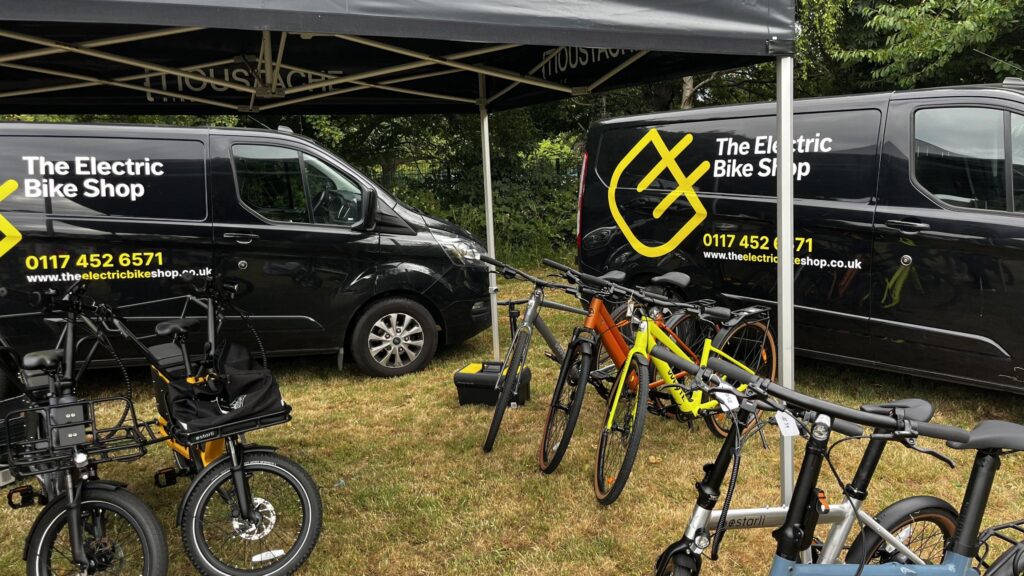In a bid to promote sustainable transportation and increase female participation in cycling, a new e-bike campaign has been launched in Gloucestershire, aimed at encouraging more women to take to the roads. The initiative, backed by local authorities and cycling advocates, seeks to dismantle barriers that have traditionally dissuaded women from cycling, including safety concerns, lack of confidence, and accessibility issues. With electric bikes offering a user-friendly alternative that makes cycling more accessible, this campaign aims not only to reduce carbon emissions but also to empower women to embrace cycling as a viable mode of transport. As part of a growing trend to promote greener travel options, the Gloucestershire e-bike campaign represents a significant step towards creating a more inclusive cycling community.
Gloucestershire’s E-Bike Initiative Aims to Break Down Barriers for Women Cyclists
In an inspiring move to promote cycling among women, Gloucestershire has launched a targeted e-bike initiative designed to remove the obstacles that often prevent women from embracing cycling. As part of this campaign, local authorities are focusing on creating a supportive environment through various measures, including:
- Community Workshops: Offering skills training and confidence-building exercises tailored specifically for women.
- Subsidized E-Bikes: Providing affordable access to electric bikes, making cycling more accessible.
- Safe Cycling Routes: Enhancing infrastructure with dedicated, well-lit cycling paths to encourage safe travel.
The initiative also emphasizes the importance of representation, aiming to create a community of female cyclists who can inspire others. Data collected through the campaign highlights that women are more likely to cycle when they feel supported and connected to a larger network. This initiative is not only about getting more women on bikes but also about fostering a culture that celebrates women in cycling, challenging stereotypes, and promoting health and environmental sustainability. Local advocates are optimistic that increased visibility of women cyclists will lead to a transformative impact on the region’s cycling demographic.
| Key Goals | Expected Outcomes |
|---|---|
| Increase Female Cyclists | Attract 500 new women cyclists by 2024 |
| Enhance Safety | Reduce cycling accidents by 20% |
| Build Community | Create monthly women’s cycling meet-ups |
Community Engagement and Workshops: Key Elements to Boost Female Participation in Cycling
To effectively foster greater female participation in cycling, community engagement and workshops are essential. These initiatives can create a supportive atmosphere that resonates with women’s unique needs and preferences. A successful campaign should focus on:
- Inclusive Programs: Design cycling workshops that cater specifically to women, ensuring a comfortable and welcoming environment.
- Skill Development: Offer sessions that teach bike maintenance and safe riding techniques, empowering participants with knowledge and confidence.
- Social Events: Organize community rides and social gatherings to create a sense of belonging and encourage networking among female cyclists.
Moreover, partnerships with local organizations can amplify the reach and effectiveness of these programs. Collaborative efforts might include:
| Partner Organization | Role in Community Engagement |
|---|---|
| Local Women’s Groups | Facilitating workshops and providing a safety net for new cyclists. |
| Cycling Clubs | Offering mentorship and organized rides. |
| Health Services | Promoting cycling as a healthy lifestyle choice. |
By tapping into local resources and fostering a sense of community, the Gloucestershire e-bike campaign can significantly enhance female participation in cycling, encouraging more women to join the movement and enjoy this empowering activity.
Sustainable Transport Solutions: The Role of E-Bikes in Promoting Gender Equality in Outdoor Activities
As initiatives aimed at improving gender equality in outdoor activities gain traction, e-bikes emerge as a game-changing solution. The Gloucestershire e-bike campaign serves as a prime example, highlighting how electric bicycles can help bridge the gender gap in cycling participation. Research indicates that women are less likely than men to cycle regularly, often due to concerns over safety, physical capability, and accessibility. By reducing the physical strain of cycling, e-bikes empower women to enjoy outdoor activities on their own terms. The added benefit of electric assistance makes cycling a viable option for a wider range of fitness levels, promoting inclusivity within the community.
The campaign not only provides greater access to e-bikes but also encourages a supportive environment for women through various workshops and group rides. This multifaceted approach fosters confidence and builds a sense of community. Key initiatives include:
- Workshops: Skill-building sessions focused on bike maintenance and safety.
- Group Rides: Organized outings designed to create a social cycling culture.
- Incentives: Discounts and promotional offers aimed specifically at women looking to try e-bikes.
| Benefits of E-Bikes for Women | Impact on Participation |
|---|---|
| Reduced Physical Strain | Increases cycling frequency among women |
| Enhanced Safety | Encourages more leisure rides |
| Flexible Commuting | Improves daily travel options |
These measures not only elevate the presence of women in cycling but also challenge long-standing stereotypes around gender roles in outdoor activities. By facilitating access to sustainable transport solutions like e-bikes, initiatives like the Gloucestershire campaign contribute to a more equitable outdoor environment, enabling all individuals to partake in cycling without barriers. As e-bike adoption continues to rise, the potential for transformative societal shifts becomes increasingly evident, paving the way for a future where gender equality in outdoor activities is not just an aspiration but a reality.
Closing Remarks
In conclusion, the Gloucestershire e-bike campaign stands as a significant step towards promoting cycling among women in the region. By addressing barriers and providing greater access to electric bicycles, the initiative aims not only to enhance mobility but also to foster a healthier, more sustainable community. As local authorities and activists continue to champion this cause, the hope is that more women will embrace cycling as an empowering means of transport. With a commitment to inclusivity and safety, Gloucestershire is setting a precedent for other regions to follow, paving the way for a future where cycling is accessible and appealing for all. As this campaign unfolds, its impact will certainly be a point of focus for both local residents and policymakers alike.











